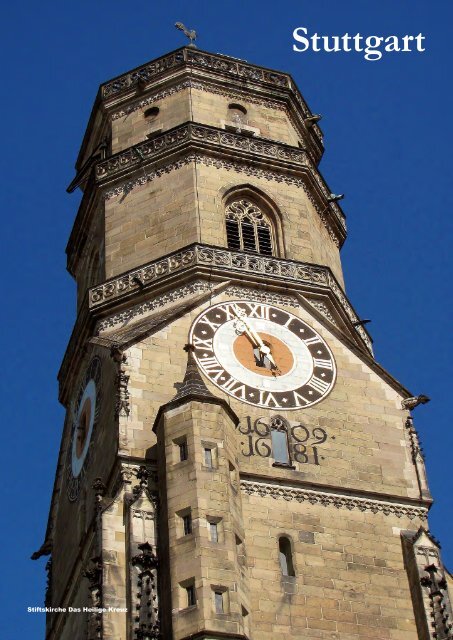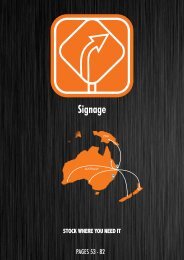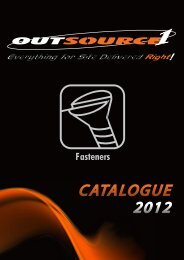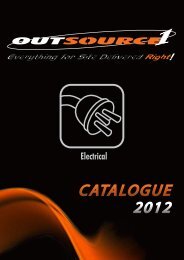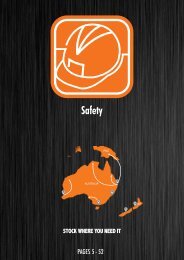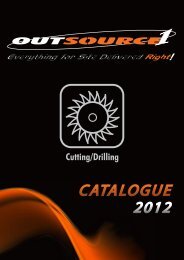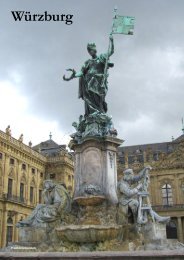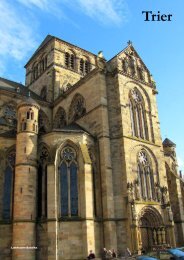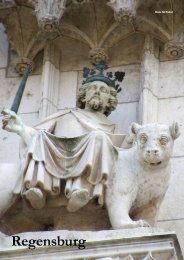Raven Guides: Germany - Struttgart
You also want an ePaper? Increase the reach of your titles
YUMPU automatically turns print PDFs into web optimized ePapers that Google loves.
Stiftskirche Das Heilige Kreuz<br />
Stuttgart
Stuttgart<br />
The Baden-Württemberg capital<br />
knows the good life and its<br />
industrial affluence has supported<br />
a strong cultural scene as well<br />
as developing one of <strong>Germany</strong>’s<br />
most vibrant city centres along the<br />
Königstraße.<br />
Stuttgart’s beginnings were in the 10th<br />
century, from a horsebreeding property to<br />
judge from the name. The personality behind<br />
the development of the 15th century city<br />
was the count Ulrich V. But it was Eberhard<br />
V the Bearded (later duke Eberhard I) who<br />
emerged from opposing family lines to unify<br />
Württemberg rule.<br />
Ulrich’s ducal namesake the following<br />
century brought the Reformation to Württemberg,<br />
having been restored after a 15-year<br />
exile and a period of Austrian supremacy.<br />
The immediate region of Stuttgart became<br />
predominantly Evangelical in faith largely due<br />
to duke Ulrich and the later Reformation work<br />
of Johannes Brenz. Much of the late medieval<br />
and Renaissance architecture that survived<br />
World War II bombing had to be extensively<br />
restored. Three churches by Aberlin Jörg<br />
were saved from the ruins but others had to<br />
be replaced.<br />
The Württemberg dukes of the 18th century<br />
preferred nearby Ludwigsburg as a residence,<br />
building an enormous and costly complex that<br />
took nearly a century to realise. Carl Eugen,<br />
enamoured of agriculture as well as opulent<br />
masquerades in the Venetian tradition, like<br />
many absolutist princes preferred a distance<br />
from the more businesslike townspeople.<br />
The giantlike Württemberger duke Friedrich<br />
became an imperial elector at the start of the<br />
19th century and quickly king as Friedrich<br />
I under the Confederation of the Rhine<br />
sponsored by Napoleon.<br />
Two giants of German intellectual<br />
achievement from the period are associated<br />
with Stuttgart: the dramatist, poet and<br />
historian Friedrich von Schiller and the<br />
Idealist philosopher Georg Wilhelm Friedrich<br />
Hegel. Hegel’s birth house is in the city and<br />
the Schiller legacy is covered in a literature<br />
museum half an hour away at his birthplace<br />
Marbach am Neckar. The business of the<br />
city owed much to the old Reiche Vorstadt<br />
precinct, today represented by restored houses<br />
from three centuries along Calwerstraße on the<br />
south-west fringe of the city centre.<br />
Automotive technology is Stuttgart’s main<br />
contribution to the world and the companies<br />
begun by Gottlieb Daimler, Wilhelm Maybach<br />
and Karl Benz merged in the 1920s to become<br />
one of the great names of motoring. The city<br />
remains a manufacturing centre for Mercedes-<br />
Benz cars and the company symbol dominates<br />
even the rail station. Ferdinand Porsche, who<br />
worked for the company, later left to form<br />
his own concern, using the Stuttgart horse<br />
to badge his marque. Museums exhibit the<br />
history of both companies.<br />
Altstadt<br />
The old city centre lies south-west of the<br />
Hauptbahnhof along the main pedestrian<br />
thoroughfare Königstraße. A walk here passes<br />
the St Eberhard cathedral and links the main<br />
arts precinct with Schloßplatz, site of the old<br />
and new residences of the Württemberg rulers.<br />
Just to the east of Schloßplatz is Schillerplatz,<br />
where the Schiller monument stands at the<br />
centre, surrounded by 16th century architecture<br />
including the Altes Schloß, Stiftskirche, Alte<br />
Kanzlei (now a restaurant), Prinzenbau and<br />
the Fruchtkasten.<br />
From the south corner of Schillerplatz,<br />
Kirchstraße leads to Marktplatz. To the left<br />
and north again on Münzstraße is Karlsplatz.<br />
From here a walk behind Neues Schloß<br />
RAVEN QUICK GUIDE<br />
Tourist information: Königstraße 1A (tel 0711-2228253, M-F 9-20, Sa 9-18, Su 10-18);<br />
Stuttgart airport level 2, terminal 3 (M-F 8-19, Sa-Su 9-13, 14-18).<br />
Accommodation service: Königstraße 1A (tel 0711-2228100, email hotels@<br />
stuttgart-tourist.de).<br />
Money: ReiseBank, Hauptbahnhof (M-Su 8-20.30); Baden-Württembergische Bank,<br />
Königstraße 3 (M-F 9-18); Schwäbische Bank, Königstraße 28 (M-W 8.15-16.15, Th<br />
8.15-17.30, F 8.15-16); Commerzbank, Königstraße 11 (M, W & F 9.30-16, Tu & Th 9.30-18).<br />
Lockers: Hauptbahnhof platforms and main entrance (€1.50/1 per hour).<br />
Transit information: VVS Infothek, Königstraße 1A, M-F 9-18.30, Sa 9-16; SSB/VVS<br />
Kundencentrum, Klett-Passage (M-F 7-19.45), VVS Kundencentrum, DB Reisezentrum,<br />
Hauptbahnof (M-F 7.30-20, Sa 9-18); SSB Kundencentrum, Rotebühl Passage, Rotebühl<br />
S-Bahn station (M-F 7-18.30); SSB Kundencentrum, Charlottenplatz (M-F 7-18.30,<br />
Sa 10-14).<br />
Post: Hauptbahnhof main hall, Arnulf-Klett-Platz 2 (M-F 8-21, Sa 9-14, Su 10-15);<br />
Königsbau Passagen, Königstraße 26 (M-F 10-20, Sa 9-16).<br />
Internet: Starbucks, Hauptbahnhof, Arnulfstraße 19 (M-Th 6.15-21, F 6.15-22, Sa 6.15-22,<br />
Su 7-21).<br />
Laundry: SB-Waschsalon Trieb, rear arcade, Königstraße 1B (M-Su 5-24); Ralf Krüger<br />
Eco-Express Waschsalon, Rosenbergstraße 67 (M-Sa 6-22); Wasch’Ecke, Katharinenstraße<br />
21D (M-F 9-19, Sa 9-20).<br />
Police: tel 110; Hauptstätte Straße 34 (tel 0711-89903100); Wiesbadener Straße 54, Bad<br />
Cannstatt (tel 0711-89904000).<br />
Pharmacy: Bahnhof-Apotheke, Königstraße 4 (M-F 8.30-20, Sa 9-20); Internationale<br />
Apotheke, Königstraße 70 (M-F 8-20, Sa 9-19); Apotheke Königsbau, Königsbau Passagen<br />
(at Schloßplatz, M-F 8.30-20, Sa 9-20); Apotheke Stadtmitte, Rotebühlplatz 20B (M-F<br />
8.30-20, Sa 9-20); Apotheke am Rotebühlplatz, Marienstraße 6 (M-F 8-19, Sa 9-19);<br />
Kron-Apotheke, Marktstraße 59, Bad Cannstatt (M-F 7-19, Sa 8.15-14).<br />
Ambulance: tel 112.<br />
The city centre from Eugensplatz.<br />
Hospitals: Katharinenhospital, Kriegsbergstraße 60 (tel 0711-27801); Bürgerhospital,<br />
Tunzhoferstraße 14 (tel 0711-27803); Krankenhaus Bad Cannstatt, Prießnitzweg 24, Bad<br />
Cannstatt (tel 0711-27802).<br />
leads to the Obere Schloßgarten, the cultural<br />
centre, not far from the starting point at the<br />
Hauptbahnhof.<br />
Information<br />
The main tourist office is Region Stuttgart’s<br />
i-Punkt at Königstraße 1A to the left of the<br />
exit from the Hauptbahnhof subway, known<br />
as Klett-Passage. The Region Stuttgart homepage<br />
www.stuttgart-tourist.de has an English<br />
version that differs slightly from the German.<br />
Hugendubel (M-Sa 9-21) is at Königstraße<br />
5 with books on Stuttgart and <strong>Germany</strong> in<br />
English as well as a good selection of English<br />
© 2014 RAVEN TRAVEL GUIDES GERMANY<br />
RAVEN TRAVEL GUIDES GERMANY - Stuttgart 1
fiction, classics and biography. Wittwer Buch<br />
(M-Sa 9-20) on Königstraße at Schloßplatz<br />
has travel guides and Stuttgart maps and<br />
booklets as well as general books in English.<br />
The Cedon museum bookshop is inside the<br />
Staatsgalerie (see Museums).<br />
Transport<br />
Trains from Frankfurt (fast services about 90<br />
minutes, much longer for others or in the small<br />
hours) run more than 20 times daily, some via<br />
Frankfurt airport or others (about 75 minutes)<br />
running direct. A variety of services connect<br />
with Munich but fast trains (two hours 15<br />
The Renaissance Altes Schloß (1562), recast<br />
by Aberlin Tretsch from the earlier medieval<br />
castle, was the seat of the Württemberg counts<br />
and dukes. Its exterior is little altered with a rare<br />
triple-level arcaded inner courtyard that holds a<br />
monument (1859, by Ferdinand von Miller) to the<br />
duke Eberhard, who unified Württemberg. The<br />
Schloßkirche (W 13-14), an early Evangelical<br />
church, is ornate in the same manner, though<br />
remodelled in 19th century Neogothic. The castle<br />
now houses the Landesmuseum Württemberg and<br />
the memorial for Colonel Claus von Stauffenberg<br />
and his brother (see Museums). Take the U-Bahn<br />
or bus 42 or 44 to Schloßplatz.<br />
Aberlin Jörg’s Hospitalkirche at the corner of<br />
Bücherstraße and Hospitalstraße was his later<br />
work, a period when his activities extended<br />
throughout Württemberg. It was built for a<br />
Dominican foundation (it is now Evangelical)<br />
but after the Reformation (celebrated by an<br />
outside monument) it served as a hospital.<br />
The tower was added in the 18th century.<br />
After the extensive World War II damage the<br />
crucifixion was saved. The tower and choir<br />
were rebuilt in the 1950s and reconstruction<br />
work is slowly restoring the structure of the<br />
nave. Take the S-Bahn to Stadtmitte or U2, 4<br />
or 14 to Berliner Platz/Hohestraße.<br />
minutes) run at least hourly. There are seven<br />
daily Zürich services (about three hours).<br />
Deutsche Bahn has an information booth<br />
(no ticket sales) in the Hauptbahnhof main hall<br />
in addition to the DB Reisezentrum (M-F 6-22,<br />
Sa-Su 7-22) with full services. Hauptbahnhof<br />
lockers here are particularly expensive at the<br />
hourly rates: a change machine is at the door to<br />
the toilets at the exit opposite Nordsee.<br />
Stuttgart airport takes flights from<br />
Birmingham, London Heathrow and Manchester<br />
as well as a network of European<br />
services.<br />
During construction works for the long-<br />
The Neues Schloß at Schloßplatz was<br />
inspired by Versailles but a building<br />
unfulfilled. The designer Leopoldo Retti<br />
died and further construction work under<br />
Philippe de la Guepiére was never<br />
completed after a 1762 fire. The patron,<br />
the duke Carl Eugen, later returned to<br />
Ludwigsburg to live. The castle was<br />
restored after almost complete<br />
destruction during World War II and the<br />
interior remodelled for government use.<br />
There are no tours but the exterior can<br />
be admired from Schloßplatz. Take the<br />
U-Bahn or bus 42 or 44 to Schloßplatz.<br />
The Stiftskirche Das Heilige Kreuz (M-Th<br />
10-19, F-Sa 10-16, Su 10-18) rises over<br />
Schillerplatz. A 12th century church was recast<br />
in the 15th century by father and son Hänslin<br />
and Aberlin Jörg. Inside are the tombs of the<br />
early counts of Württemberg, who are<br />
celebrated in the north choir with admired<br />
16th century sculptures crafted by Sem Schlör.<br />
The church, the evangelical centre for<br />
Württemberg, is also resting place for the<br />
Lutheran reformer Johannes Brenz and has<br />
been largely restored after heavy 1944<br />
bombing damage. Take the U-Bahn or bus 42<br />
or 44 to Schloßplatz.<br />
term redevelopment of Stuttgart Hauptbahnhof<br />
two locations out of the city centre function<br />
as long-distance bus stations: the bus station<br />
at Obertürkheim east of the city (Hafenstraße<br />
22, take S1 to Obertürkheim) and the<br />
Zuffenhausen bus station at Burgunderstraße<br />
north-west of the city. Take S4-6 or bus 92 to<br />
Zuffenhausen. From there MeinFernbus runs<br />
services to and from Berlin (via Nuremberg),<br />
Munich, Saarbrücken and Cologne, but<br />
its Freiburg services run from Vaihingen<br />
near the S-Bahn station via Karlsruhe. The<br />
FlixBus network includes links with Munich,<br />
Berlin (via Nuremberg) and Frankfurt (via<br />
Mannheim).<br />
Urban transit: The city transport authority<br />
for buses and U-Bahn services is SSB. A fast<br />
S-Bahn network, the more frequent light rail<br />
U-Bahn and local bus services are available.<br />
Apart from the Hauptbahnhof, rail services<br />
have hubs at Stadtmitte (also known as<br />
Rotebühlplatz, a subway network extending<br />
between S-Bahn and U-Bahn stations) and<br />
Charlottenplatz. Klett-Passage under Arnulf-<br />
Klett-Platz is the subway link between the<br />
Hauptbahnhof, U-Bahn and S-Bahn stations<br />
and local buses stopping in front of the<br />
Hauptbahnhof. Many other useful bus lines<br />
stop at Schloßplatz. The airport is 13km from<br />
the city and has S-Bahn (S2 and S3) and bus<br />
connections (nos 122 and 828), sharing a<br />
station and bus stop with the Messe Stuttgart<br />
trade fair centre.<br />
Unconventional parts of the SSB city<br />
network are the Waldfriedhof Standseilbahn<br />
or funicular railway and the Zacke (a<br />
Zahnradbahn, cog or rack railway), operating<br />
under the overall ticketing system. The<br />
Standseilbahn runs every 20 minutes (M-<br />
Su 9.10-17.50) from its station at Böblinger<br />
Straße, a few minutes from Südheimer Platz<br />
station (U1 and U14), a trip of four minutes<br />
up to the forest cemetery Waldfriedhof. The<br />
2km Zacke negotiates the steep slope between<br />
Marienplatz (with interchange to U1 and<br />
U14) and Degerloch (U5, 6 and 8), running<br />
from early morning to mid evening every 15<br />
minutes (half-hourly Sundays).<br />
The Verkehrs- und Tarifverbund Stuttgart<br />
(VVS) website www.vvs.de has an English<br />
version and several maps isolating rail<br />
services, a larger map taking in Ludwigsburg<br />
and a useful central city map with all<br />
services. Tickets can be bought at VVS<br />
vending machines, from bus drivers, online<br />
or (cheaper) by mobile phone. The timetable<br />
finder is in German only.<br />
Day tickets for unlimited rides for the<br />
two inner zones cost €6.30, for three to four<br />
zones €10.10 (which includes the city area<br />
and Ludwigsburg palaces) and for the whole<br />
network €14.30 (groups up to five €10.90,<br />
€15.30 and €18.50). A short-trip ticket (one<br />
stop on the S-Bahn or up to three stops on the<br />
trams and buses) is €1.20. Single-trip tickets<br />
valid for two hours range from €2.10 to €7.10<br />
according to zones. Children pay about halffare<br />
but count as adults for the group ticket.<br />
Day and single-journey tickets are validated<br />
at purchase but tickets bought online or<br />
otherwise in advance must be validated at<br />
the entrance to S-Bahn stations or on U-Bahn<br />
carriages or buses.<br />
Bicycles can be carried free on the S-Bahn<br />
(except M-F 6-8.30, for which times an<br />
additional child’s ticket must be bought). On<br />
the U-Bahn no bicycles may be carried at peak<br />
Stuttgart 2 - RAVEN TRAVEL GUIDES GERMANY
In the 15th century Aberlin Jörg left his mark on<br />
Stuttgart’s churches, updating and extending the<br />
St Leonhard chapel (1330) to become the<br />
Leonhardskirche (1466) at Leonhardsplatz,<br />
incorporating the older choir but adding stalls. The<br />
church (Tu-W & F 10-16, Th 10-18, Sa 10-13) had to<br />
be reconstructed after World War II and is still used for<br />
regular services, though the original vaulting was only<br />
restored in the choir. The humanist Johannes Reuchlin<br />
has his grave monument at the north end of the choir<br />
and a display about his life and work is nearby. The<br />
crucifixion outside the apse is a copy of a Hans Seyffer<br />
work that once stood inside. Take U1, 2, 4 or 11 or bus<br />
43 or 44 to Rathaus.<br />
The Hegel-Haus, Georg Wilhelm Hegel’s<br />
birthplace at Eberhardstraße 53, contains an<br />
exhibition of the philosopher’s life here from<br />
1770 to 1788, quotations, editions of his works<br />
and his later career in pictures and documents.<br />
Hegel developed a theory of history and progress<br />
that became known as the dialectic and was<br />
widely influential (it was to be built on and<br />
criticised by Marx). The house (M-W 10-17.30,<br />
Th 10-18.30, F 10-17.30, admission free) dates<br />
from the 16th century and ground-floor exhibits<br />
include historical maps and views of Stuttgart in<br />
the 18th and 19th centuries (see also Museums).<br />
Take U1, 2, 4 or 11 or bus 43 or 44 to Rathaus.<br />
The courtyard of Altes Schloß.<br />
The Schellenturm (1564) is one of the few<br />
remnants of the old Stuttgart, the last<br />
preserved of the city’s wall towers built by<br />
the duke Christoph. Facing Katharinenplatz<br />
from Weberstraße, it comprises stone and<br />
half-timbered elements and was probably<br />
used as a storage building but now makes<br />
a pleasant restaurant location, having been<br />
damaged in 1944, rescued from the threat of<br />
demolition in the 1950s and reconstructed in<br />
1980. Take U1, 2, 4 or 11 or bus 43 or 44 to<br />
Rathaus.<br />
times (M-F 6-8.30 and 16-18.30) and at others<br />
there is a restriction of two per carriage. Shared<br />
bicycle and pedestrian areas are extensive and<br />
on the red bicycle-only lanes signs on the<br />
surface warn of pedestrian crossings ahead.<br />
An interactive bicycle planner in English is on<br />
a tab at the VVS website.<br />
Stuttgart’s environmental zone restricts<br />
vehicle emissions and cars displaying stickers<br />
for class 4 emissions only are allowed in an<br />
area including Zuffenhausen and most of Bad<br />
Cannstatt in the north, Untertürkheim and<br />
Degerloch in the east, Weilimdorf, Botnang<br />
and Vaihingen in the west and bounded by<br />
the E52 in the south. Ludwigsburg has its<br />
own environmental zone, joining Stuttgart’s<br />
to the north. For more details on how to<br />
obtain stickers see the Car section under the<br />
Transport - Urban menu of the <strong>Raven</strong> <strong>Guides</strong><br />
<strong>Germany</strong> page.<br />
StuttCard<br />
The city benefits card carries discounts up<br />
to 50% on admission to about 20 attractions<br />
including museums, Schloß Solitude and the<br />
Ludwigsburg palaces, while a few others can<br />
be visited free. At €9.70 per person it is valid<br />
for one day. At €18 a three-day (consecutive)<br />
VVS public transport pass for the city area can<br />
be added (or at €22 a three-day transport pass<br />
for the full VVS area). The transport pass for<br />
each adult allows two accompanying children<br />
up to age 17. For €24 a card with one-day<br />
access to the hop on-hop off city tours (see<br />
below) and a one-day VVS city area card is<br />
available. A pamphlet detailing all discounts is<br />
at the Region Stuttgart website.<br />
Tours<br />
There are two separate round trips for the<br />
hop on-hop off city tour buses, which start at<br />
Schloßplatz and last almost one hour and 50<br />
minutes respectively, passing several chief<br />
attractions hourly, eight times each daily.<br />
The fare of €12/7 (families €25) is valid for<br />
four hours only and the city tour. The full-day<br />
fare of €18/11 (families €38) allows rides on<br />
both as well as the chance for link-ups with<br />
the historic Waldfriedhof Standseilbahn and<br />
Zacke railways. Children under 6 ride free.<br />
Tickets can be purchased at tourist offices.<br />
Tours requiring four-day online advance<br />
bookings and minimum group sizes include<br />
wine tours, a 90-minute city walk (Mar-Nov),<br />
a two-hour bus grand tour (Jan-Mar) and a<br />
culture walk (monthly only, Jan-Mar & Nov-<br />
Dec). Visit the Region Stuttgart website for<br />
details and bookings.<br />
Cruises<br />
Neckar-Käpt’n (tel 0711-54997060, www.<br />
neckar-kaeptn.de) operates harbour and up and<br />
downstream cruises from the Neckartalstraße<br />
pier near Wilhelma (May-Oct Tu-Su, €7-32,<br />
bicycles €4) with return legs €7 extra.<br />
Views<br />
The city’s situation in a topographic bowl<br />
gives several vantage points but the best view<br />
of the whole city centre is from Eugensplatz<br />
to the east (take U15). Further along the same<br />
U-Bahn line at Ruhebank is the TV tower<br />
or Fernsehturm (normal admission €5) of<br />
150m, a model for others of its type but closed<br />
for building work during 2013.<br />
Schloß Solitude (see below) commands<br />
wide vistas of the area and is worth a visit<br />
RAVEN TRAVEL GUIDES GERMANY - Stuttgart 3
MUSEUMS & GALLERIES<br />
Landesmuseum Württemberg (Tu-Su 10-17,<br />
€5.50/3.50, families €13.50), based at<br />
Schillerplatz 6 in the Altes Schloß, combines<br />
the exhibitions of the royal treasury, coin<br />
cabinet and weapons, the Roman lapidarium<br />
(in the south wing of Neues Schloß) and<br />
musical instruments (in the nearby<br />
Fruchtkasten). Take the U-Bahn or buses 42<br />
or 44 to Schloßplatz. The costume and<br />
ceramics collections are in Ludwigsburg (see<br />
the Schloß Ludwigsburg entry).<br />
Linden-Museum (Tu & Th-Sa 10-17, W 10-20,<br />
Su 10-18, €4/3, families €8, special exhibitions<br />
€12/10, families €24, combination tickets<br />
€14/12 and €28, children under 12 free) at<br />
Hegelstraße 1 has ethnographic collections<br />
and frequent special exhibitions. Audio guides<br />
to special exhibitions are €2. Take buses 40 or 42 to Hegelplatz or U4 to Rosenbergstraße.<br />
The Museum Hegel-Haus (M-W & F 10-17.30, Th 10-18.30, Sa 10-16, entry free), entered<br />
from Eberhardstraße 53, has documents and letters from the life of the philosopher Hegel<br />
in his birth house. The correspondence from other intellectuals, manuscripts and influential<br />
books of the period represents a roll call of German post-Enlightenment thinkers. A<br />
pamphlet in English offers some background to the exhibits. Take U1, 2, 4 or 11 or bus 43<br />
or 44 to Rathaus.<br />
The wheels that drive Stuttgart belong to famous names. The Mercedes-Benz Museum<br />
(Tu-Su 9-18, €8/4 with half-price tickets available 16.30-17.00 until closing time), at<br />
Mercedesstraße 100 in Bad Cannstatt, contains more than 100 vehicle exhibits including<br />
motor sport designs spanning 125 years. Take S1 to Neckar Park or S2-3 to Bad Cannstatt,<br />
then bus 56. The Porsche Museum (Tu-Su 9-18, €8/4) at Porscheplatz in Zuffenhausen<br />
exhibits more than 80 high-performance vehicles from past and present. Take S6 to<br />
Neuwirtshaus.<br />
A slower pace is offered at Straßenbahnwelt Stuttgart (W-Th & Su 10-17, €4/3, families<br />
€10) at Veielbrunnenweg 3 in Bad Cannstatt, a historical museum and restoration centre<br />
run by tram enthusiasts for vintage rolling stock, other public transport vehicles and<br />
artifacts. Sunday single (€4/3, families €8) or return trips on reconditioned vintage trams<br />
are available (day cards €10/8, families €20). Take S1-3 to Bad Cannstatt, U1, 2 or 11 to<br />
Mercedesstraße or bus 56 to Veielbrunnenweg.<br />
On a smaller scale is the KillesbergBahn miniature rail centre (Easter-early Oct M-F 14-<br />
17.30, Sa-Su 10-12.30, 14-17.30). Tickets for 2km trips most days cost €3/2.50 (children<br />
3-7 €1.50). In October trains run Sa-Su 14-17.30 weather permitting, but check with the<br />
tourist office or use browser translations at www.killesbergbahn.de.<br />
The Staatsgalerie Stuttgart (Tu & Th 10-20, W & F-Su 10-18, €7/5, with special<br />
exhibitions €12/10), is free on Wednesdays or for visitors under 20. The gallery, at Konrad-<br />
Adenauer-Straße 30, is focused on the 20th century with avant garde works but includes<br />
European painting, drawings, engravings and sculpture from medieval times and French<br />
painters of the past two centuries as well as photography. The gallery’s Baroque collection<br />
is offsite (see the Schloß Ludwigsburg entry).<br />
Kunstmuseum Stuttgart (Tu-Th & Sa-Su 10-18, F 10-21, €6/4, special exhibitions<br />
€8/6.50, combination tickets €11/8, children under 13 free), at Kleiner Schloßplatz has<br />
modern works with emphasis on special exhibitions and the Willi Baumeister archive. Take<br />
the U-Bahn or bus 42 or 44 to Schloßplatz.<br />
The Naturmuseum Stuttgart (Tu-F 9-17, Sa-Su 10-18) divides its natural history<br />
collections either side of Rosensteinpark at Museum Schloß Rosenstein, exhibiting<br />
evolution and biological diversity, and Museum am Löwentor, more focused research into<br />
the earliest stages of life. Entry to either is €4/2.50, families €9, combination tickets €5/3.50<br />
and €10, free after 13.00 Wednesdays. For Schloß<br />
Rosenstein take U14 to Wilhelma. For Museum am<br />
Löwentor take S4-6 or U15 to Nordbahnhof. About<br />
15 minutes’ walk across the park separates the two.<br />
The real story behind a Tom Cruise film role is told at<br />
the Stauffenberg Erinnerungsstätte (Tu-Su 10-18,<br />
€1.50/1) in Altes Schloß. The life of the count Colonel<br />
Claus von Stauffenberg, a key figure in the German<br />
conspiracy to assassinate Hitler, is documented with<br />
the lesser-known resistance work of his brother<br />
Berthold. Enter from the east (Stauffenbergplatz)<br />
side. Take the U-Bahn or buses 42 or 44 to<br />
Schloßplatz.<br />
on that basis alone. The observation platform<br />
of the Hauptbahnhof tower Turmforum, at<br />
present part of the station and Stuttgart-Ulm<br />
rail upgrade project, can be visited free (Apr-<br />
Sep M-Su 10-21, Oct-Mar M-Su 10-18).<br />
Parks & gardens<br />
Schloßgarten is where Stuttgart strolls, runs,<br />
cycles and enjoys open space. It strings northeast<br />
almost to the Neckar bank and connects<br />
with Rosensteinpark. By a shared foot and<br />
cycle bridge it is linked on the city side<br />
with the Obere Schloßgarten with its water<br />
features and arts centres and the central public<br />
space Schloßplatz.<br />
Feuerseeplatz south of the city is an urban<br />
oasis with its lake against the backdrop of the<br />
English-style Johanniskirche.<br />
Schloß Solitude is the getaway destination<br />
of choice for city dwellers with its city views<br />
from a grassed hillside and the palace complex<br />
as a backdrop.<br />
Wilhelma (€14/7, families €35 with<br />
discounts for winter and after 16.00) combines<br />
a zoo of about 1000 species with botanic<br />
gardens of about 7000 species. The complex,<br />
near Rosensteinpark north-east of the city<br />
centre, is open daily from 8.15, closing<br />
seasonally at times between 16.00 and 18.00<br />
(ticket machines are available at times offices<br />
are closed). Free guided tours (Apr-Oct Sa<br />
10.00, Su 10.00 and 14.00) are available. Take<br />
U13 or buses 52, 55 or 56 to Rosensteinbrücke.<br />
Markets<br />
The Art Nouveau Markthalle (M-F 7-18.30,<br />
Sa 7-16) on Dorotheenstraße near Altes<br />
Schloß has, as well as fresh produce, stalls for<br />
imported delicacies, meats, cheeses, wines and<br />
liqueurs.<br />
Events<br />
Messe Stuttgart trade fairs and associated<br />
events run through most of the year, the only<br />
quiet periods being Christmas and between<br />
July and mid-September.<br />
The Stuttgarter Frühlingsfest runs more<br />
than three weeks from mid-April to early May<br />
with fairground activities and beer tents, where<br />
the city’s activity intensifies at weekends. Beer<br />
is again the focus from late September for the<br />
Cannstatter Volksfest, regarded as bigger<br />
than the spring event, starting about a week<br />
later than Munich’s Oktoberfest and running<br />
about a fortnight.<br />
In between is the shorter Sommerfest<br />
over four days at the start of August and<br />
the Stuttgarter Weindorf festival, which<br />
fills Schillerplatz late in August and early in<br />
September with food, wine and the revellers.<br />
The Weihnachtsmarkt during Advent<br />
from late in November until just before<br />
Christmas takes place in Schloßplatz and<br />
concerts are held in the Altes Schloß courtyard.<br />
Food<br />
The restored pedestrian precinct of Calwerstraße<br />
offers several options for indoor or<br />
outdoor dining for lunch and dinner.<br />
For Swabian dishes in pleasant but<br />
unique surroundings, consider Weinstube<br />
Schellenturm (M-Sa 17-24) in the old halftimbered<br />
tower at Weberstraße 72 near<br />
Katharinenplatz. Courses under €20 are easy<br />
to find and serving is outdoor in summer or<br />
when weather permits.<br />
The Enchilada chain has its Stuttgart<br />
Stuttgart 4 - RAVEN TRAVEL GUIDES GERMANY
The promenade of Königstraße is the<br />
social and commercial artery of the city.<br />
The Königsbau shopping and commercial<br />
complex facing Schloßplatz.<br />
PERFORMANCE<br />
The city has a firm commitment to culture, whether through its large theatres and concert<br />
halls in the Obere Schloßgarten or the alternative, youth and puppet theatre offerings of the<br />
Kultur unterm Turm centre. The short Sommerfest early in August is the occasion for many<br />
events. Musikfest Stuttgart from late in August to mid September features international<br />
performers and conductors playing at the main city auditoriums and other venues. The<br />
ensembles of the Internationale Bachakademie Stuttgart take part in the festival but<br />
also perform a separate annual program. Tickets are available through the link at<br />
www.bachakademie.de.<br />
From May to early October the Biergartensaison, including classic rock, blues, jazz<br />
and other modern sounds, stages several concerts each month at the Biergarten im<br />
Schloßgarten, Am Schloßgarten 18, with food and drinks available.<br />
The chief venues are the concert halls of the Liederhalle at Berliner Platz (where the<br />
largest auditorium, the Beethoven-Saal, has almost 2000 seats), the Gustav-Siegle-Haus<br />
at Leonhardsplatz 28, the Schauspielhaus and Opernhaus at Obere Schloßgarten, the<br />
Kammertheater at Konrad-Adenauer-Allee 30 and the smaller Nord studio theatre at<br />
Löwentorstraße 68.<br />
The Staatstheater Stuttgart combines opera, ballet and theatre companies and its<br />
ticket office (M-F 10-19, Sa 10-14) in the arcade at Königstraße 1B and website<br />
www.staatstheater-stuttgart.de handle advance sales for opera, theatre and some concert<br />
events. Ticket prices start at €8.<br />
The Stuttgarter Philharmoniker (www.stuttgarter-philharmoniker.de) is based at the<br />
Gustav-Siegle-Haus (M-Th 9-12.30, 13.30-15.30, F 9-12.30), generally performing there<br />
(tickets from €7) or at the Liederhalle (where tickets start at €15/7).<br />
The Stuttgarter Kammerorchester (www.stuttgarter-kammerorchester.de) performs in<br />
chamber concerts generally two or three times a month, with extra events in the Christmas<br />
period. Using a partial browser translation tickets (starting at €12 for non-members) can be<br />
booked online at www.kulturgemeinschaft.de.<br />
Tickets for musicals and other live shows (generally in German) are available through<br />
Stuttgart-Marketing (tel 0711-2228111, email hotels@stuttgart-tourist.de) at Königstraße<br />
1A, or Stage Entertainment, which has a ticket counter (M-F 9-20, Sa 9-18, Su 11-18) in<br />
the same building. A range of concerts and live events can also be booked at<br />
www.easyticket.de.<br />
For German theatre activity in Stuttgart look at Theater der Altstadt (including Theater im<br />
Westen), Rotebühlstraße 89 (www.theater-der-altstadt.de) and the Schauspielbühnen in<br />
Stuttgart website (including Komödie im Marquardt, www.schauspielhaus-komoedie.de).<br />
Renitenztheater (www.renitenztheater.de) at Büchsenstraße 26 includes live music and<br />
cabaret in its program. Kultur unterm Turm is under the Tagblatt-Turm at Eberhardstraße<br />
61 (the arcade with events noticeboards is open M-F 7-24).<br />
restaurant (Su-Th 18-1, F-Sa 18-2) in the<br />
courtyard at Eberhardstraße 69 near Tübinger<br />
Straße with a dinner offering including<br />
enchiladas under €10, steaks and fajitas under<br />
€16 cocktails are among its drink selection.<br />
Café Künstlerbund (Su-Th 9-1, F-Sa 9-3)<br />
at the front of the Kunstgebäude at Schloßplatz<br />
2 serves breakfast until 11.00 (weekends until<br />
15.00) as well as a menu including vegetarian<br />
dishes and salads.<br />
For vegetarian or vegan dishes including<br />
take-away with an alternative bent, the falafel<br />
bar Vegi Voodoo King (M-W 11.30-23, Th<br />
11.30-1, F-Sa 11.30-4, Su 17-23) at Steinstraße<br />
13 offers solid vegetarian plates at low prices<br />
as well as its falafels.<br />
Kebab bars offering large meals at low<br />
prices are many, especially at the south end of<br />
Königstraße, but World of Kebap (M-Su 10-<br />
24) at Rotebühlplatz 15 is perhaps the busiest<br />
with good local custom and outdoor service<br />
(order inside).<br />
Meet & drink<br />
Outdoors on Calwerstraße, where the renovated<br />
patrician houses set the tone, is a favourite<br />
daytime cafe venue. Café Künstlerbund (see<br />
Food) serves a range of drinks from coffee to<br />
cocktails.<br />
A pleasant cafe at the centre of the city<br />
is Hochland Café (M-Sa 8.30-18.30) at<br />
Königstraße 7, a vehicle for the coffee brand<br />
of the same name but attached to the local<br />
Catholic institute and its associated arts<br />
bookshop – sadly with few titles in English.<br />
Accommodation<br />
To book a range of accommodation contact<br />
Stuttgart-Marketing (tel 0711-22280, email<br />
info@stuttgart-tourist.de) or visit the website<br />
www.stuttgart-tourist.de. More budget<br />
beds can be found online at www.deutschepensionen.de/pension-stuttgart.<br />
Rates at some properties can be up to 50%<br />
per higher during the Cannstatter Volksfest<br />
(end of September and early October) or the<br />
Frühlingsfest (from late April to mid May).<br />
Good value and position are available at<br />
Hotel Central Classic (tel 0711-6155050,<br />
www.central-classic.de), near the centre at<br />
Hasenbergstraße 49A, but even closer to<br />
Feuersee S-Bahn station (seven lines). Single/<br />
double/triple rooms with breakfast start at<br />
€73/89/120, extra beds €18. WLAN access is<br />
available.<br />
The IB-Gästehaus Stuttgart (tel 0711-<br />
649520, www.ib-bz.de/gaestehaus) at Cottastraße<br />
14 offers a range of singles/doubles at<br />
€54-66/76-88 (triples €93) plus breakfast at<br />
€4. Take U15 to Bubenbad.<br />
The Hotel Ibis Stuttgart Centrum (tel<br />
0711-120640) at Marienplatz 8-10 offers<br />
singles/doubles from €55.20 (summer specials<br />
available). WLAN access in common areas is<br />
free but in rooms attracts a fee. Breakfast is €6<br />
extra. Take U1 or U14 to Marienplatz. Rates at<br />
Hotel Ibis Stuttgart City (tel 0711-255510),<br />
north of the city centre at Preßelstraße 15, start<br />
at €63. Take U6 or U7 to Löwentorbrücke.<br />
Alex30 Hostel (tel 0711-8388950, www.<br />
alex30-hostel.de) at Alexanderstraße 30 is<br />
a private inner-city hostel offering WLAN<br />
free, as well as an internet cafe. Single/double<br />
rooms with shared facilities (including fridge)<br />
start at €36/58, with some private doubles at<br />
€68 and two apartments starting at €36 per<br />
person. The excellent breakfast buffet (until<br />
RAVEN TRAVEL GUIDES GERMANY - Stuttgart 5
Calwerstraße’s<br />
pedestrian<br />
stretch with<br />
restored<br />
patrician<br />
buildings is<br />
the scene of<br />
a restaurant<br />
precinct.<br />
11am) is €8 extra, as is parking. Reception<br />
service is 24-hour. Take U7 to Olgaeck and<br />
walk north-east on Alexanderstraße.<br />
Blaues Haus (tel 0179-9602375, email<br />
buchung@blaues-haus-stuttgart.de, www.<br />
blaues-haus-stuttgart.de), Tübinger Straße 78-<br />
80, offers basic singles/doubles with kitchen<br />
access at €35/55 in a small but central house,<br />
with lower rates per night for longer stays.<br />
Take U1 or U14 to Marienplatz.<br />
Gästehaus Stuttgart (tel 0711-46966267,<br />
www.gaestehausstuttgart.de) north-east of<br />
the city near the river at Bottroper Straße 55<br />
is a large establishment with singles/doubles/<br />
triples at €30/25/23 per person with breakfast<br />
€5 extra, lower for four nights or more. WLAN<br />
is available. Take U14 to Rosensteinbrücke,<br />
then bus 56 to Bottroperstraße.<br />
There are two DJH hostels. A room with<br />
a view is in prospect at Jugendherberge<br />
Stuttgart International (tel 0711-6647470,<br />
info@jugendherberge-stuttgart.de) east of the<br />
city at Haußmannstraße 27, offering beds with<br />
breakfast at €25.60. Take U15 to Eugensplatz.<br />
Jugendherberge Stuttgart Neckarpark (tel<br />
0711-6647470, email info@jugendherbergestuttgart.neckarpark.de)<br />
at Elwertstraße 1<br />
across the river near Cannstatter Wasen, has<br />
similar rates. Take S1-3 to Bad Cannstatt.<br />
Stuttgart has one of Europe’s great Baroque residence<br />
complexes including 18 buildings and gardens. It took three<br />
architects to plan Schloß Ludwigsburg (1733), the<br />
Versailles reflection of the duke Eberhard Ludwig, but due<br />
to its financial demands it took nearly 30 years to build and<br />
the duke barely lived to see its completion. His successors<br />
had to see through the decoration and Philippe de la<br />
Guepiére completed the court theatre, for which the stage<br />
machinery, some of the oldest in Europe, remains. The<br />
palace (M-Su 10-17) contains the church with<br />
Württemberger tombs, a Baroque picture gallery,<br />
ceramics and costume museums and the ducal<br />
apartments (apartments short tour Tu-Su €3.50/1.80) and<br />
a children’s museum has been opened. The 90-minute<br />
palace tours (M-Su 10-17, €7/3.50, families €17.50) are<br />
available in English (mid Mar-mid Nov M-F 13.30, Sa-Su<br />
11.00, 13.30 &15.15, mid Nov-mid Mar M-Su 13.30) or German tours (mid Mar-mid Nov half-hourly, mid Nov-mid Mar at least five times<br />
daily) can be joined with guide text. For a palace tour including Schloß Favorite (where tours are in German only) admission is €8.50/4.30,<br />
families €21.30. The Baroque Experience audio guide tour including the gardens is available at €16/8, single-museum tours with audio<br />
guide at €3.50/1.80 (families €8.80) or audio guide tours of all museums at €7/3.50 (families €17.50). A Residenztour palace ticket spread<br />
over two days is available at €13/6.50. Take S4 or S5 to Ludwigsburg station, then bus 421, 427 or 430 to Residenzschloß.<br />
On a sight line 10 minutes’ walk north of Schloß Ludwigsburg is Schloß Favorite (open<br />
for tours in German only, mid Mar-Oct M-Su 10-12, 13.30-17, Nov-mid Mar Tu-Su 10-12,<br />
13.30-16, €3.50/1.80, families €8.80), designed as a Baroque hunting lodge and summer<br />
palace by Donato Giuseppe Frisoni for Eberhard Ludwig, but the interiors were later recast<br />
in Napoleonic Neoclassical taste. The surrounding Favoritepark is open daily (Apr-Aug<br />
8-19, Sep-Oct 9-18, Nov-Jan 9-16, Feb-Mar 9-17, no bicycles Sa-Su) and now occupied by<br />
protected wildlife. Take S4 or S5 to Ludwigsburg station, then bus 421, 427 or 430 to<br />
Schloß Favorite. The water pavilion Monrepos (1764), about 1.5km to the north-west of<br />
the lodge off Frankfurter Straße, was built for the duke Carl Eugen.<br />
Schloß Solitude (1769, open for tours only Apr-Oct Tu-Sa 10-12, 13.30-17, Su 10-17,<br />
Nov-Mar Tu-Sa 13.30-16, Su 10-16, €4/2, families €10) on a ridge to the west of the<br />
city was commissioned by Carl Eugen as a retreat and something of a contemporary<br />
amusement park for aristocratic guests. It was designed by La Guepiére, whose style<br />
was moving toward Neoclassicism despite the ducal preference for Rococo but the<br />
interiors still show the exotic contemporary influences of China. The ceiling<br />
paintings of the Festsaal are features. The site exploits spectacular views and includes<br />
other buildings, surrounded by forest areas ideal for walking. Tours in English are<br />
offered (when open) at 12.00 or 13.00 but a pamphlet in English also gives some<br />
background. Take the S-Bahn to Feuersee, then bus 92 from the Feuersee stop on<br />
Silberburgstraße to Solitude (17 minutes).<br />
Stuttgart 6 - RAVEN TRAVEL GUIDES GERMANY


